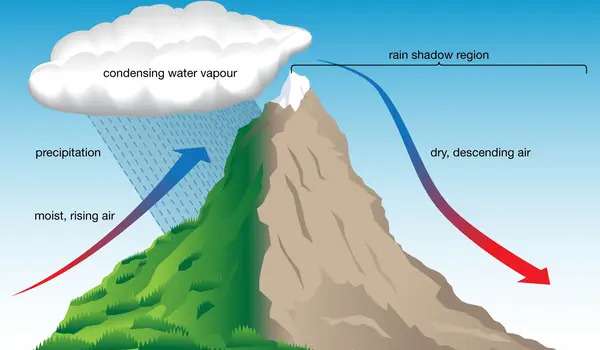Understanding cloud patterns in our changing climate is critical for developing accurate predictions about the impact on society and wildlife. Scientists from the Institute of Science and Technology Austria (ISTA) and the Max-Planck-Institute for Meteorology published a new study in the journal Science Advances that uses a high-resolution global climate model to understand how cloud and storm clustering affects rainfall extremes in the tropics. They demonstrate that when temperatures rise, the severity of extreme precipitation events rises.
Extreme rainfall is one of the most devastating natural disasters, claiming human lives and inflicting billions in damage. Their frequency has increased in recent years as the environment has warmed. For decades, scientists have used computer models of the Earth’s climate to better understand the systems that drive these phenomena and anticipate future trends.
In a new study, now published in the journal Science Advances, a team of researchers from the Institute of Science and Technology Austria (ISTA) and the Max-Planck-Institute for Meteorology (MPI-M), led by ISTA postdoc Jiawei Bao, used a new state-of-the-art climate model to study how cloud and storm clustering impacts extreme rainfall events, specifically in the tropics, in greater detail than has ever been possible.
This new type of model with a much finer resolution showed that, with a warmer climate, extreme rainfall events in the tropics increase in severity more than was expected from theory due to clouds being more clustered.
Jiawei Bao
“This new type of model with a much finer resolution showed that, with a warmer climate, extreme rainfall events in the tropics increase in severity more than was expected from theory due to clouds being more clustered,” Bao, who originally started this project during his previous postdoc position at the MPI-M, explains. “We can see that when clouds are more clustered, it rains for a longer time, so the total amount of rainfall increases. We also found that more extreme rain over high-precipitation areas happens at the cost of the expansion of dry areas – a further shift to extreme weather patterns. This is due to how clouds and storms cluster together, which we could now simulate with this new climate model.”
This new model, first proposed in 2019, simulates the climate with a much higher resolution than previous ones. Previous models could not factor in clouds and storms in as much detail, therefore missing much of the complex dynamics of air movement that create clouds and make them congregate to form more intense storms.
While the model replicates the entire world at once, the scientists concentrated their investigation on the area of the tropics near the Equator. They accomplished this because cloud and storm formation differs at that latitude from elsewhere. Caroline Muller, Assistant Professor at ISTA, adds, “Previous models have hinted at the impact of cloud clustering on precipitation extremes but have failed to provide the necessary data.” In conjunction with our colleagues Bjorn Stevens and Lukas Kluft from the Max Planck Institute for Meteorology, our findings add to the expanding body of research demonstrating that cloud formation on a smaller scale has a critical impact on climate change consequences.”

Collaborative Models
To better understand the effects of climate change, researchers from around the world are working together to develop increasingly precise and realistic models of the world’s climate. Climate models divide the Earth’s atmosphere into three dimensions, each with its own set of temperature, pressure, humidity, and other physical variables. They then use physical equations to mimic how these fragments interact and evolve over time, yielding a depiction of the real world. Because computational power and storage are limited, these models must be simplified, and scientists are always working to improve their accuracy.
Older generations of climate models use chunks of around 100 kilometers in horizontal length, which still result in tens to hundreds of thousands of them covering the whole globe. Advances in algorithms and supercomputers enabled scientists to increase the resolution of the models more and more. “We used a climate model developed at MPI-M and analyzed the data hosted at the German Climate Computing Centre in Hamburg with a resolution of just five kilometers which was very computationally expensive,” Bao adds. “All climate research is an immense collaborative effort by hundreds of people who want to contribute to our understanding of the world and our impact on it.”
Bao, who became interested in climate research during his PhD at the University of New South Wales in Australia and now works as an IST-BRIDGE postdoctoral fellow at ISTA, plans to continue his research on extreme precipitation events to find more evidence for their causes and impacts using additional models.
Caroline Muller, who studied mathematics before discovering her passion for research questions with more real-world implications, and her team use climate models to study air convection and the formation of clouds and storms at various scales — up to tropical cyclones — in order to better understand their causes and the effects of climate change on society and the environment.
















